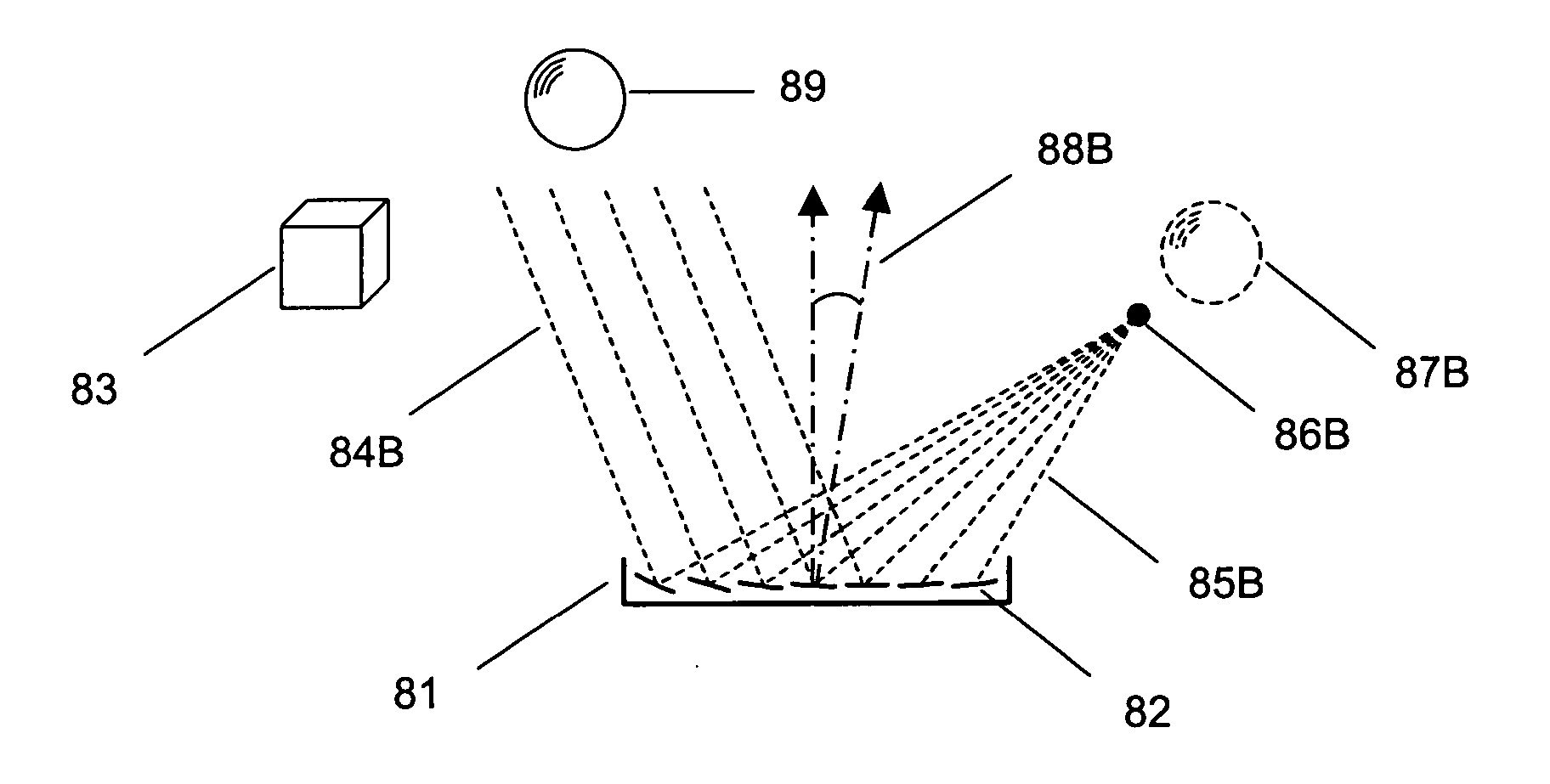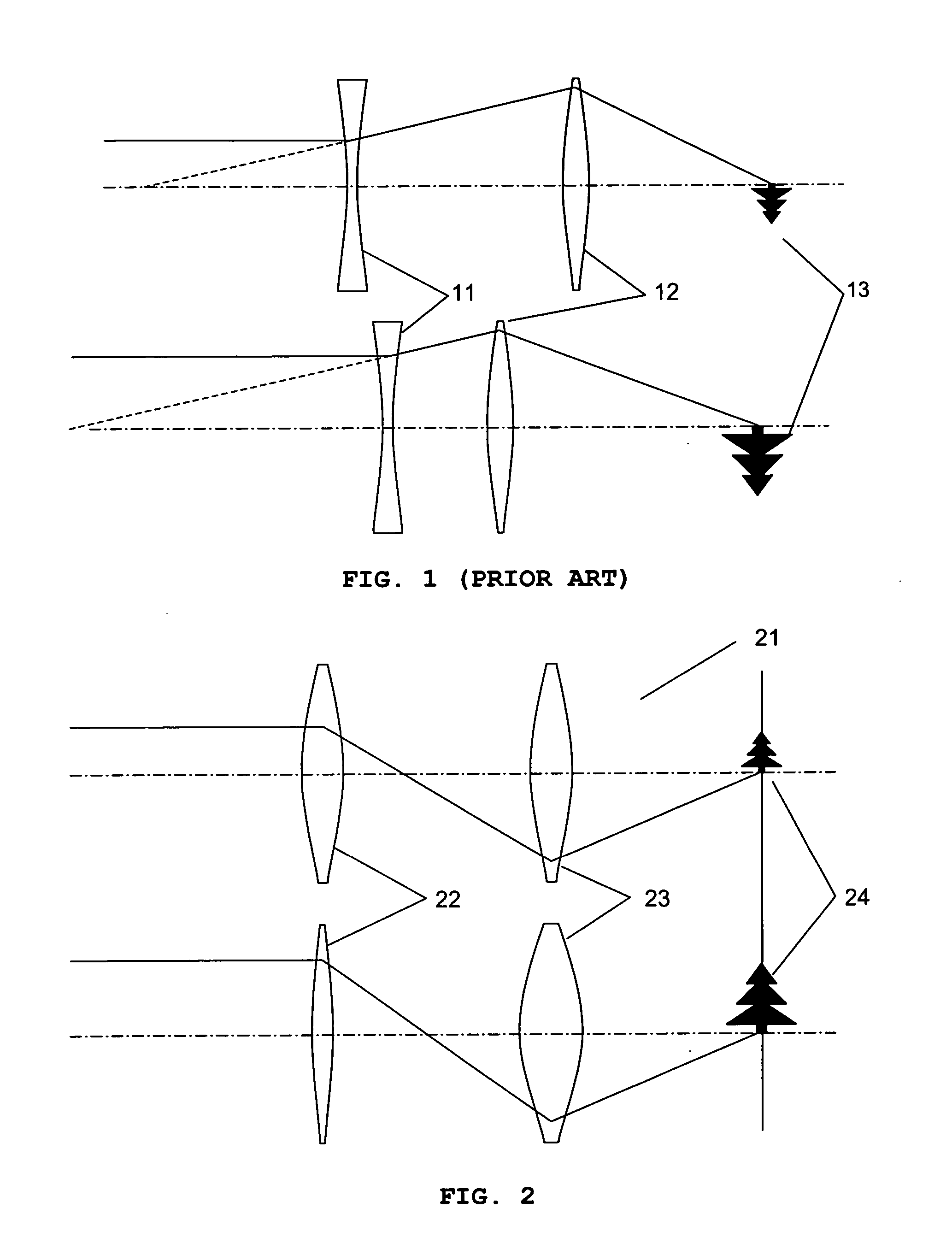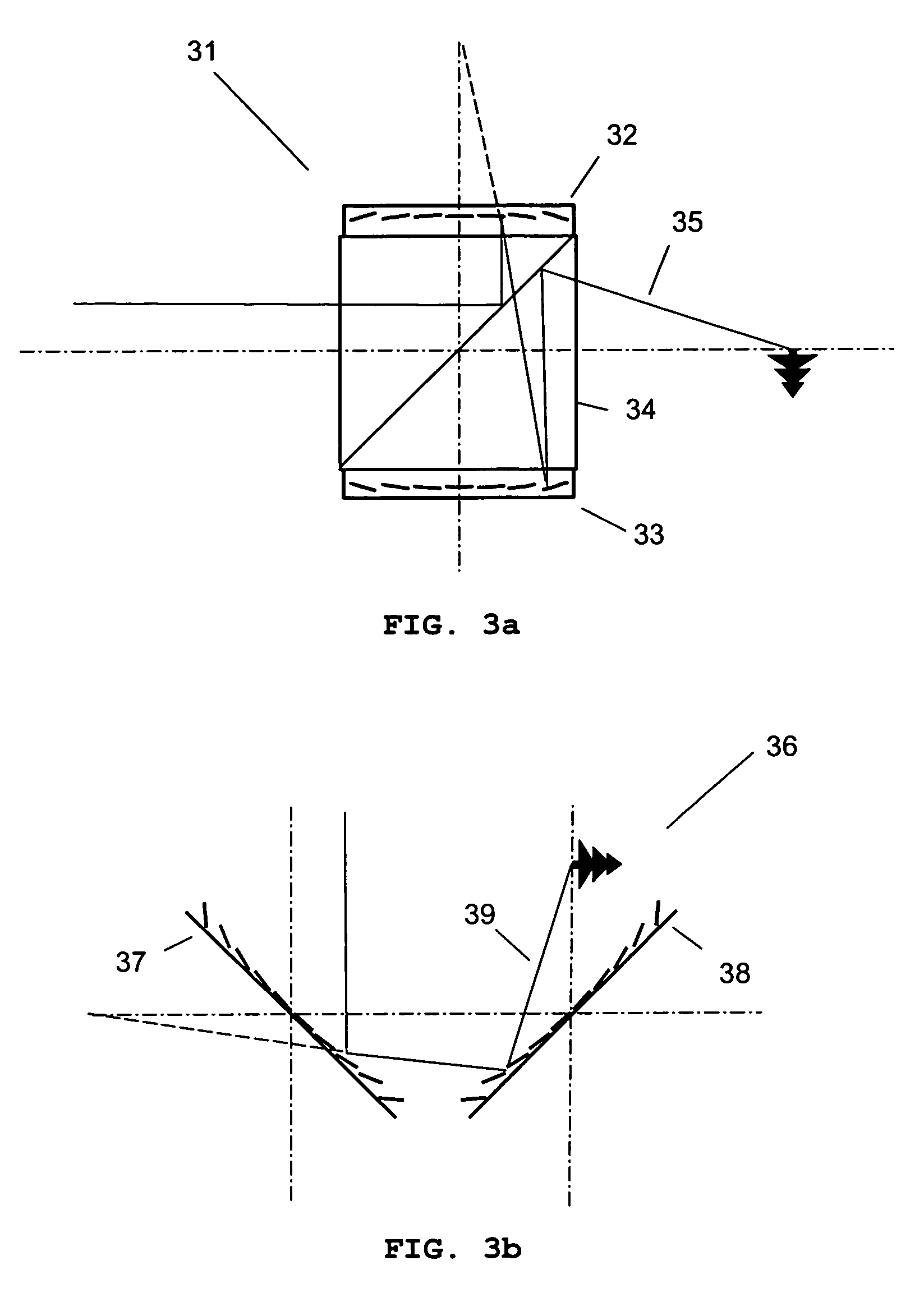Small and fast zoom system using micromirror array lens
a micromirror array and zoom system technology, applied in the field of optical zoom devices, can solve the problems of reducing the speed of zooming, increasing space and weight, power consumption, and possibly inducing unwanted jitter, and achieves compact zoom systems, high zooming speed, and large variation of magnification.
- Summary
- Abstract
- Description
- Claims
- Application Information
AI Technical Summary
Benefits of technology
Problems solved by technology
Method used
Image
Examples
Embodiment Construction
[0069]FIG. 2 shows a zoom system 21 using one or more variable focal length lenses. In the embodiment shown in FIG. 2, the zoom system includes a first variable focal length lens 22 and a second variable focal length lens 23. Changing the magnification of an imaging system is accomplished by utilizing the variable focal length lenses 22, 23. The first variable focal length lens 22 changes the image size. But, the image is defocused because the imaging position is also changed. Therefore, the focal length of the two variable focal length lenses 22, 23 must be changed in unison to magnify and keep the image 24 in-focus.
[0070]FIG. 3a shows a zoom system 31, in which MMALs 32 and 33 are used as variable focal length lenses 32 and 33. Since the MMALs 32 and 33 are reflective types, it is impossible to make an in-line optical arrangement without additional optical elements. Therefore, the zoom system 31 includes a beam splitter 34 positioned in the path of light 35 between the first MMAL...
PUM
 Login to View More
Login to View More Abstract
Description
Claims
Application Information
 Login to View More
Login to View More - R&D
- Intellectual Property
- Life Sciences
- Materials
- Tech Scout
- Unparalleled Data Quality
- Higher Quality Content
- 60% Fewer Hallucinations
Browse by: Latest US Patents, China's latest patents, Technical Efficacy Thesaurus, Application Domain, Technology Topic, Popular Technical Reports.
© 2025 PatSnap. All rights reserved.Legal|Privacy policy|Modern Slavery Act Transparency Statement|Sitemap|About US| Contact US: help@patsnap.com



